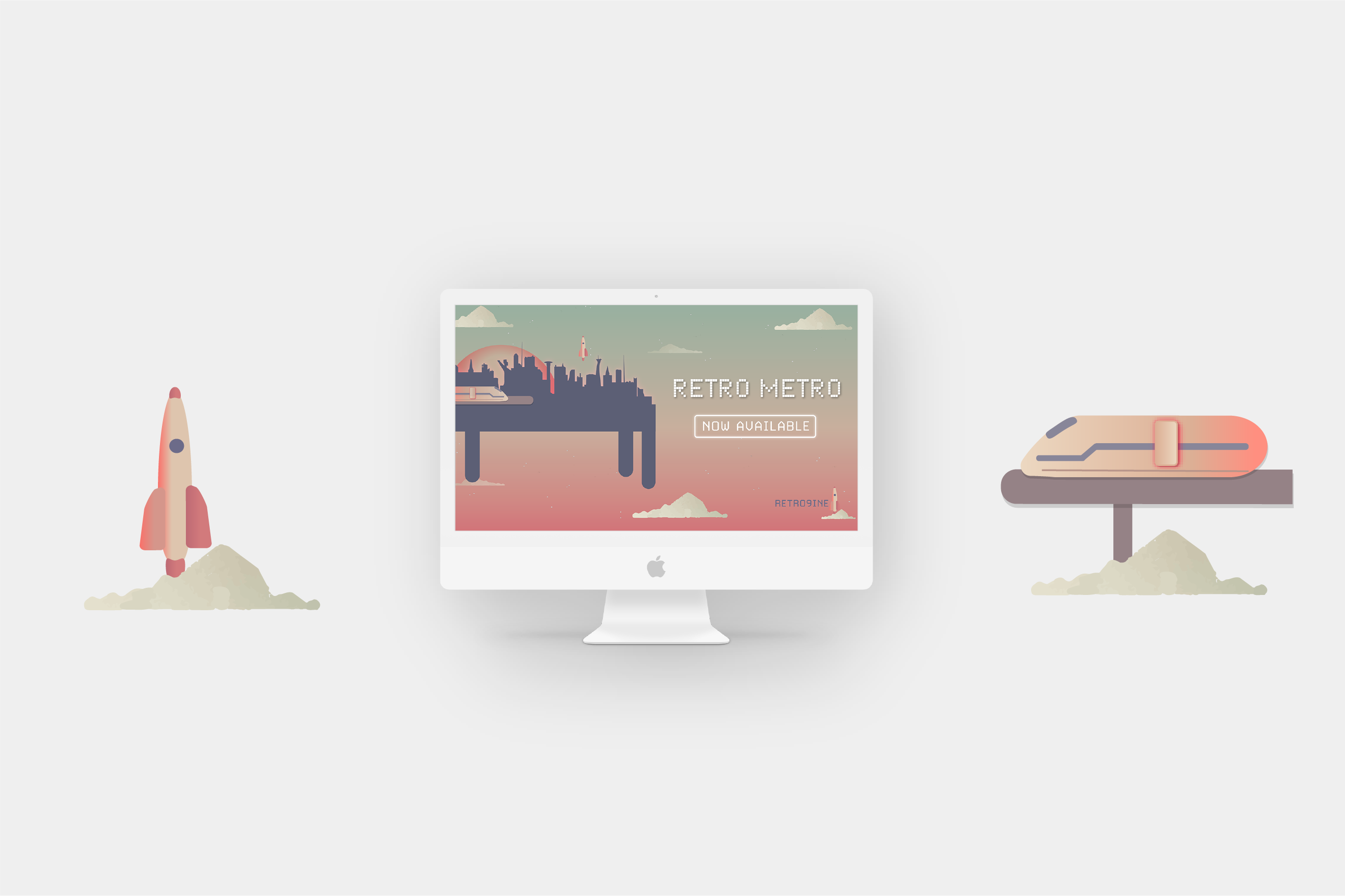Retro Metro
Description
Swing through the city, in Retro Metro: a 2D platformer. Grapple your way to each metro station in this Retro Futuristic city in order to reach your destination as a robot on the run.
Role
Game UI + Branding + Team Website
Website
Learn More
Game Trailer


-
Main Objective
Our class participated in a design thinking exercise to come up with potential themes our class could base our 2D games off of. After proposals and a round of voting, the most popular theme was Retro Future. Our teams were able to adopt this theme as loosely as we wanted, so we were able to come up with our game feel within the limitation of a Retro Future theme. My team consisted of developer Alan Xu and videographer Yuyu Dai, and myself as the visual and user interface designer.
-
What Is Out There?
We began our design process by researching games, movies, and artwork inspired the retro future theme. We took elements of a few of our favorite examples to use for our mood board for the overall game aesthetic. We also researched game mechanics that we particularly enjoyed ourselves when playing games. One mechanic our developer wanted to implement was a grapple function. This was the main feature of our game, along with it being a 2D platformer.
-
Design Process
Team Branding: We chose a team name that was cohesive with our theme of our game. Our team was number 9, so we combined that with the retro theme to come up with Retro9ine. We wanted the theme of our game to reflected in each aspect of our game, so it was important to select a color palette, fonts, and a game character to communicate our vision. Our team was inspired by futuristic travel ideas, which helped us come up with Retro Metro for the title of our game. Futuristic cities and travel inspired the overall game feel and aesthetics.
Game Aesthetics: After coming up with the concept and theme, I created many different iterations of our game assets and backgrounds, each varying in color palette and layout. We voted on which one we liked best and ended up choosing a pastel retro future palette. By creating multiple, small assets, I was able to combine them to create different level backgrounds quickly and easily. To ensure our game had a fun game feel, we added background music to each level, as well as sound effects when players used the grapple mechanic and when they leveled up. Our character we chose for our game was a robot, as we thought it fit our futuristic theme well.
Game Mechanics: After creating the game backgrounds, I began to map out where the platforms would be for our game. Our main game mechanic was the grapple feature, so I wanted to create three levels that took advantage our grapple feature. The objective of our game was to swing from platform to platform to make it to a metro station to catch the metro in order to go to the next level. After mapping out where the platforms should go, Alan was able to import the game backgrounds into Unity and use tile mapping to bring functionality to the platforms I created. Our players were able to walk, jump, and swing from each platform. If players fell off the platform, they would respawn where they started. This stayed true once players began the levels as well.
Game UI: After each level was mapped out, I created the introduction screens for the game. We wanted to have a title screen, an instructions screen, a tutorial level, and game credit window. I began by creating the icons for our game mechanics to ensure players knew what keys to press once they began for our instructions screen. I made sure players were able to see what keys did what, as well as learn the objective of the game before they jumped into playing. Then I created the tutorial level that required players to use all of the keys they just learned to begin the first level. After players made it through the tutorial and all of the levels, they would end on a credits screen that listed our team members names, as well as a play again button.
-
Reflection
Our team was great at managing our time. We got things done in a timely manner, ensuring we were on track to have a completed game in a tight timeline. To avoid getting distracted, we allocated a set amount of days for every major feature within the game. If we were unable to complete and implement said feature within those days, we moved onto other more doable features. Our team was able to implement three levels to our game, each with different level designs to show off our fun grapple mechanic. Our dev log was updated regularly, showing our fast-paced implementation of additions to our game. The final prototype included audio as well, with a main menu + other user interaction elements. Visit our team site to view our full process.
